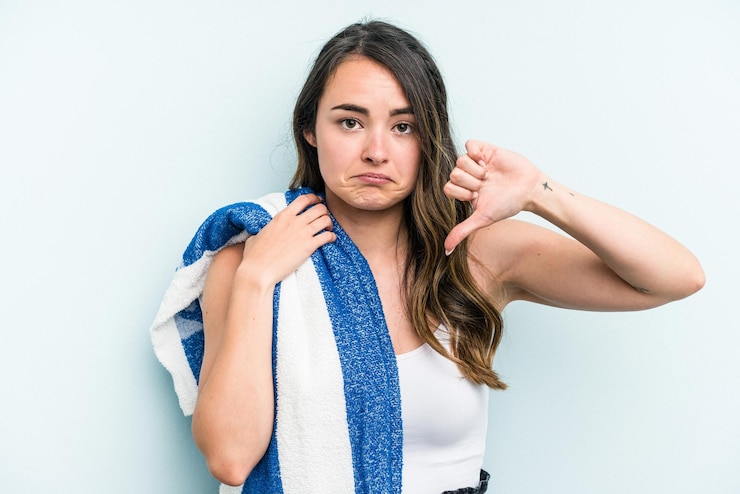Excessive Sweating Hyperhidrosis is a condition that causes an individual to sweat excessively, often beyond the body’s natural requirements for temperature regulation. This condition can affect specific areas like the underarms, hands, feet, and face, or it can be more generalized. While it is not a life-threatening condition, it can significantly impact one's day-to-day life, affecting both physical comfort and emotional well-being. Fortunately, there are many ways to manage hyperhidrosis, allowing individuals to lead a more comfortable life. Let's explore Excessive Sweating Hyperhidrosis in Dubai.
Understanding Hyperhidrosis
Hyperhidrosis can be categorized into two types: primary and secondary. Primary hyperhidrosis typically affects localized areas like the hands, feet, or underarms and occurs without an underlying medical condition. It is often hereditary, and individuals can begin experiencing symptoms during childhood or adolescence. Secondary hyperhidrosis, on the other hand, is a result of another medical condition, such as diabetes, menopause, or hyperthyroidism, and typically causes generalized sweating across the body.
Regardless of the type, managing hyperhidrosis is essential for minimizing its impact on daily life.
Medical Treatments for Hyperhidrosis
There are various medical treatments available to help control excessive sweating. A healthcare provider will typically determine the most appropriate treatment based on the severity and underlying causes of the condition.
Antiperspirants
The first line of defense against hyperhidrosis is often topical antiperspirants, which contain aluminum chloride. These antiperspirants work by blocking the sweat glands and reducing sweat production. Stronger formulas may be prescribed by a doctor for more severe cases. It is essential to apply these products to dry skin at night and wash them off in the morning to achieve maximum effectiveness.
Botox Injections
Botox, known primarily for its cosmetic use to reduce wrinkles, can also be used to treat hyperhidrosis. Botox injections temporarily block the nerve signals responsible for stimulating sweat glands, providing relief for up to six months. This treatment is particularly effective for underarm sweating, but it can also be used on the hands, feet, and face.
Iontophoresis
Iontophoresis is a non-invasive treatment that uses electrical currents to block sweat glands. It involves placing the affected area in a bath of water while a mild electrical current is applied. This procedure can be done in a clinical setting or at home with a specialized machine. Regular treatments are often needed to maintain results.
Microwave Therapy (MiraDry)
MiraDry is a treatment that uses microwave technology to target and destroy sweat glands in the underarms. This method provides long-lasting results after just one or two sessions and is considered a permanent solution for underarm hyperhidrosis. Although effective, it may cause some discomfort during the procedure, such as swelling and tenderness.
Surgery
In severe cases, surgical options are considered. One option is the removal of sweat glands in the affected area, which can provide long-term relief. Another surgical approach is sympathectomy, which involves cutting or removing parts of the nerves responsible for sweating. This procedure is most often used for individuals with severe primary hyperhidrosis of the hands and armpits.
Lifestyle Changes to Manage Hyperhidrosis
In addition to medical treatments, certain lifestyle adjustments can help individuals manage excessive sweating more effectively.
Wear Breathable Clothing
Choosing lightweight, loose-fitting clothes made from natural materials such as cotton can help reduce sweating and make it less noticeable. Fabrics that wick moisture away from the skin, such as moisture-wicking activewear, can also provide comfort and keep sweat at bay.
Avoid Triggers
Certain triggers can exacerbate sweating, including hot weather, spicy foods, alcohol, and caffeine. Identifying and avoiding these triggers when possible can help reduce the frequency and severity of sweating episodes.
Stay Cool
Using fans, air conditioning, or cooling devices during hot weather can help prevent excessive sweating. Additionally, drinking plenty of water helps regulate body temperature and prevent overheating, which can trigger sweating.
Use Sweat-Absorbing Products
Absorbent products such as underarm pads or sweat-absorbing insoles for shoes can provide extra protection against excessive sweat. These items can be discreetly worn throughout the day to minimize discomfort and reduce the impact of visible sweating.
Practice Stress Management
Stress and anxiety are common triggers of excessive sweating. Managing stress through relaxation techniques such as deep breathing, meditation, yoga, or mindfulness can help reduce sweating episodes. Regular physical exercise can also promote mental well-being and lower stress levels, which in turn may reduce sweat production.
Emotional and Psychological Support
Living with hyperhidrosis can take an emotional toll, leading to feelings of embarrassment, self-consciousness, and social anxiety. It's important to address the psychological aspects of the condition in addition to physical treatment.
Seek Counseling or Support Groups
Talking to a therapist can help individuals cope with the emotional challenges of living with hyperhidrosis. Support groups, either in-person or online, can also provide comfort and reassurance. Sharing experiences with others who understand the condition can help individuals feel less isolated and more empowered.
Practice Self-Acceptance
It can be difficult to accept the physical limitations that come with hyperhidrosis, but developing a positive mindset is essential for improving self-esteem. Practicing self-compassion and focusing on strengths rather than perceived flaws can help individuals manage the emotional burden of the condition.
Diet and Hydration
Maintaining a healthy diet and staying hydrated can play a crucial role in managing excessive sweating. Dehydration can cause the body to sweat more as a way to cool down, so it’s important to drink plenty of water throughout the day. Additionally, consuming a balanced diet rich in fruits, vegetables, and lean proteins can help regulate the body's functions and reduce the likelihood of excessive sweating.
Conclusion
Managing excessive sweating hyperhidrosis involves a combination of medical treatments, lifestyle changes, and emotional support. While there is no one-size-fits-all solution, finding the right treatment plan can significantly reduce symptoms and improve the quality of life. It's important to work closely with a healthcare provider to explore the best options for controlling sweating and to seek support for the emotional and psychological aspects of the condition. With the right strategies, individuals with hyperhidrosis can lead a more comfortable and fulfilling life.





Comments